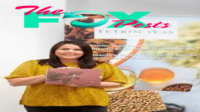Business
Nestlé Adds Sugar to Baby Milk and Cereal in Poorer Nations, Report Finds
Food and beverage giant Nestlé adds sugar and honey to its infant milk and cereal products in developing countries but not in European markets, according to a new report published Wednesday.
In a joint investigation, Zurich-based watchdog Public Eye and the International Baby Food Action Network (IBFAN) sent popular baby food samples in Asia, Latin America, and Africa from NestlĂ©âthe worldâs largest consumer goods corporation worth $265.57 Billion of April 2024âto a testing laboratory in Belgium. The study examined 150 products sold by the company in low and middle-income nations, including best-selling brands Cerelac and Nido.
âWe targeted sugar because that's the number one enemy when it comes to nutritional Health,â Laurent Gaberell, Public Eyeâs agriculture and nutrition expert, tells TIME. âExposure to sugar at an early age of babies and infants can be very problematic. It's one of the key factors behind the obesity crisis. If babies are exposed to sugar, they basically have a higher risk of being obese later, and suffering adverse Health outcomes such as diabetes, hypertension, and other chronic diseases.â
The results of the testing found that âalmost allâ Cerelac wheat-based cereals by NestlĂ© in those regions, targeted at infants from six months of age, contained added sugar equivalent to an average of 4 grams per serving, or a sugar cube. The highest volume of sugar added to a product, at 7.3 grams per serving, was detected in the Philippines, followed by 6.8 grams in Nigeria and 5.9 grams in Senegal. Additionally, seven out of 15 countries did not declare on product labels that sugar was added.
Meanwhile Nido powdered-milk products aimed at toddlers aged one to three contained almost two grams of added sugar per serving, with milk powder in Panama recording highs of 5.3 grams. This was followed by findings of 4.7 grams of sugar per portion in Nicaragua, and 1.8 grams in Mexico.
Public Eye and IBFAN found that sugar was not added to equivalent products in NestlĂ©âs home nation Switzerland, as well as other major European markets in Germany, the U.K. and France. The report calls this âdouble standard that is unjustifiable and problematic,â both from an ethnic and public health standpoint.
There are currently more than 1 billion people around the world living with obesity.
In a statement to TIME, a spokesperson for NestlĂ© said: âBaby food is a highly regulated category. Everywhere we operate, our portfolio complies with local regulations or international standards, including labeling requirements and thresholds on carbohydrate content that encompasses sugars.â
Gaberell says that itâs difficult to decipher how much sugar is added to a product, as most manufacturers only disclose total sugar content, which can include âbasically harmlessâ natural sugars found in fruit and vegetables. India, Bangladesh, Thailand, Indonesia, and South Africa are nations that disclose added sugars in Cerelac baby cereals, while countries like: Brazil, Pakistan, the Philippines, Nigeria, Senegal, do not.
The World Health Organization (WHO) European guidelines recommend that no sugars or sweetening agents should be used in food for children under the age of three. There is no other regional guidance, but the European suggestion is internationally applicable.
Meanwhile U.S. government guidelines suggest children younger than two years old should avoid added sugars, and the U.K. marks this limit at children under four. Gaberell says there is a growing consensus around the world for babies to avoid early consumption of sugar.
âThe only reason why NestlĂ© does it is basically because they know that kids like sugar and they will come back and want their product,â says Gaberell. âIt's just to increase the sales of their product.â
NestlĂ© says that it has reduced the amount of sugar added to its worldwide portfolio of infant cereals by 11% over the last decade. The spokesperson said total sugars are declared in NestlĂ© products and that Nido and Cerelac products have âslight variations in Recipesâ due to regulations and availability of local ingredients.
Public Eye and IBFANâs report noted that iNFLuencer marketing was a major strategy employed by NestlĂ©. Gaberell said the company uses âmom iNFLuencersâ and Health specialists in paid partnerships that âmisleadâ the average consumer. Gaberell also notes that the paid partnerships can look like trustworthy expert advice compared to conventional advertising methods.
âYou'll find online social media nutritionists, pediatricians, doctors, that promote NestlĂ© products, NIDO and Cerelac products as healthy for kids as good for their immunity, good for their brain developmentâ says Gaberell. âThe problem is that they are targeting moms and parents with that kind of content.â
-

 Business1d ago
Business1d agoUS House passes measure that could punish nonprofits Treasury Department decides are âterroristâ
-

 Business1d ago
Business1d agoFast fashion may seem cheap, but itâs taking a costly toll on the planet â and on millions of young customers
-

 Business2d ago
Business2d agoNew Information: These HV Big Lots Are Now Staying Open
-

 Business2d ago
Business2d agoBrush Fire Rages On Near Butternut In Great Barrington, MA
-

 Business4d ago
Business4d agoCarbon offsets can help bring energy efficiency to low-income Americans â our Nashville data shows it could be a win for everyone
-

 Business4d ago
Business4d agoWorkplace diversity training programs are everywhere, but their effectiveness varies widely
-

 Business4d ago
Business4d agoFirm bosses urged to make use of Welsh language to revitalise rural economic system
-

 Business5d ago
Business5d agoDonor-advised funds are drawing a lot of assets besides cash â taking a bigger bite out of tax revenue than other kinds of charitable giving



























